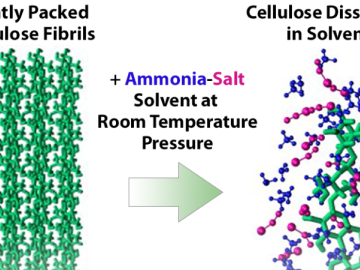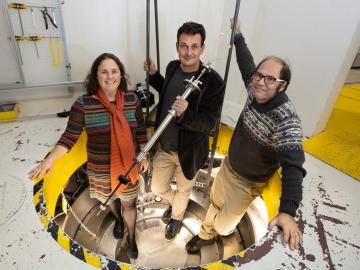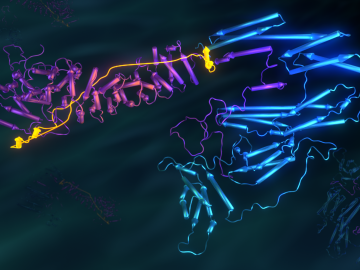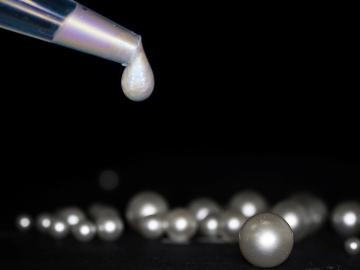
Filter News
Area of Research
- (-) Building Technologies (2)
- (-) Fusion Energy (11)
- (-) Neutron Science (81)
- Advanced Manufacturing (6)
- Biology and Environment (40)
- Computational Biology (1)
- Computational Engineering (2)
- Computer Science (12)
- Energy Science (53)
- Energy Sciences (1)
- Fusion and Fission (17)
- Materials (36)
- Materials for Computing (8)
- Mathematics (1)
- National Security (13)
- Nuclear Science and Technology (10)
- Quantum information Science (5)
- Supercomputing (78)
News Type
News Topics
- (-) Computer Science (10)
- (-) Frontier (1)
- (-) Fusion (11)
- (-) Neutron Science (77)
- (-) Physics (2)
- 3-D Printing/Advanced Manufacturing (5)
- Advanced Reactors (6)
- Artificial Intelligence (5)
- Big Data (1)
- Bioenergy (4)
- Biology (3)
- Biomedical (10)
- Buildings (3)
- Chemical Sciences (3)
- Clean Water (2)
- Coronavirus (5)
- Energy Storage (4)
- Environment (4)
- Fossil Energy (1)
- High-Performance Computing (1)
- Hydropower (1)
- Machine Learning (3)
- Materials (9)
- Materials Science (12)
- Mathematics (1)
- Microscopy (2)
- Nanotechnology (3)
- National Security (1)
- Nuclear Energy (11)
- Polymers (1)
- Quantum Computing (1)
- Quantum Science (2)
- Security (1)
- Space Exploration (2)
- Summit (3)
- Transportation (2)
Media Contacts

Biological membranes, such as the “walls” of most types of living cells, primarily consist of a double layer of lipids, or “lipid bilayer,” that forms the structure, and a variety of embedded and attached proteins with highly specialized functions, including proteins that rapidly and selectively transport ions and molecules in and out of the cell.

The prospect of simulating a fusion plasma is a step closer to reality thanks to a new computational tool developed by scientists in fusion physics, computer science and mathematics at ORNL.

Researchers have developed a new process that could make it much cheaper to produce biofuels such as ethanol from plant waste and reduce reliance on fossil fuels.

Illustration of the optimized zeolite catalyst, or NbAlS-1, which enables a highly efficient chemical reaction to create butene, a renewable source of energy, without expending high amounts of energy for the conversion. Credit: Jill Hemman, Oak Ridge National Laboratory/U.S. Dept. of Energy

ORNL computer scientist Catherine Schuman returned to her alma mater, Harriman High School, to lead Hour of Code activities and talk to students about her job as a researcher.

As scientists study approaches to best sustain a fusion reactor, a team led by Oak Ridge National Laboratory investigated injecting shattered argon pellets into a super-hot plasma, when needed, to protect the reactor’s interior wall from high-energy runaway electrons.

Scientists at the U.S. Department of Energy’s Brookhaven National Laboratory have new experimental evidence and a predictive theory that solves a long-standing materials science mystery: why certain crystalline materials shrink when heated.

Two of the researchers who share the Nobel Prize in Chemistry announced Wednesday—John B. Goodenough of the University of Texas at Austin and M. Stanley Whittingham of Binghamton University in New York—have research ties to ORNL.

Researchers used neutron scattering at Oak Ridge National Laboratory’s Spallation Neutron Source and High Flux Isotope Reactor to better understand how certain cells in human tissue bond together.

Researchers used neutron scattering at Oak Ridge National Laboratory’s Spallation Neutron Source to probe the structure of a colorful new material that may pave the way for improved sensors and vivid displays.


